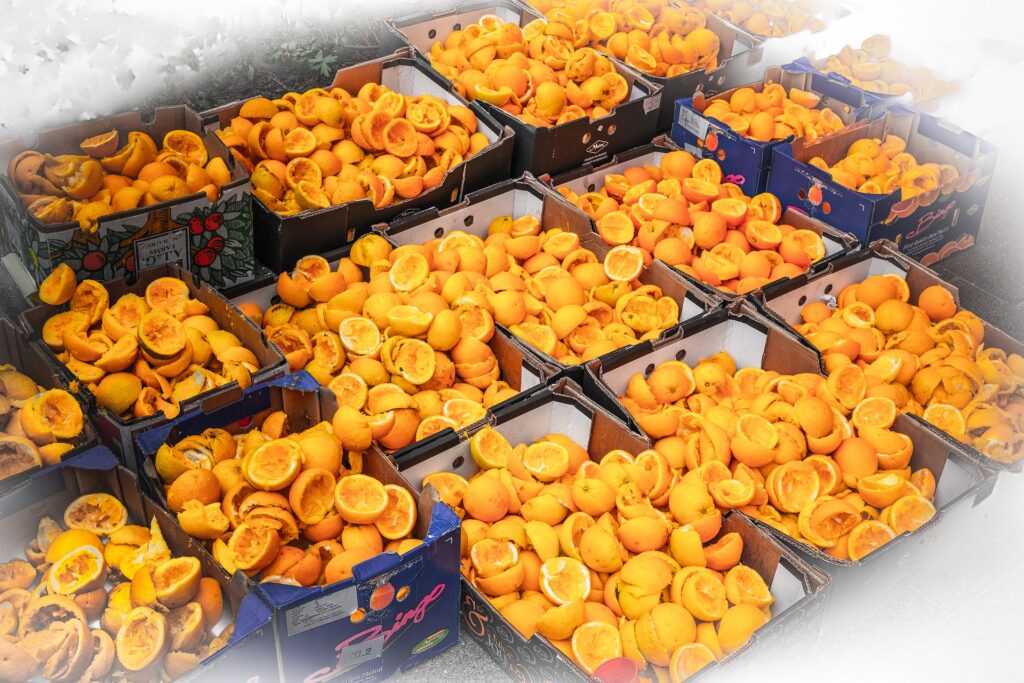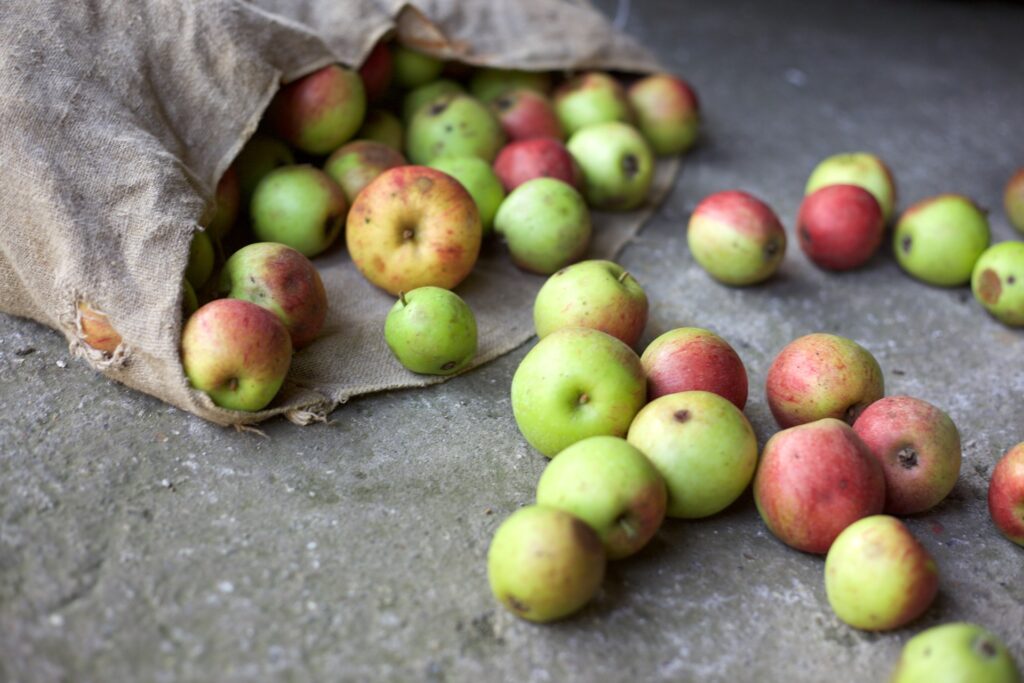 Agri-food waste from agriculture and the food industry mainly contains plant-based substances (leaves, stems, etc. ). These wastes are lignocellulosic materials, i.e. they are composed of three types of polymers: cellulose, hemicellulose and lignin.
Agri-food waste from agriculture and the food industry mainly contains plant-based substances (leaves, stems, etc. ). These wastes are lignocellulosic materials, i.e. they are composed of three types of polymers: cellulose, hemicellulose and lignin.
While cellulose and hemicellulose are used as raw materials in the paper industry and in ethanol biorefineries, lignin is a largely unused waste material which can and must be valorised to produce high value-added substances in accordance with the principles of the circular economy and a plastic-free vision.
Lignin constitutes up to 10-25% of waste lignocellulosic biomass and is a rich source of phenolic compounds which are very interesting because they are formed by aromatic rings with attached hydroxyl groups. Thanks to their structure, phenolic compounds possess extremely interesting properties such as antioxidant and antimicrobial activity. The phenolic compounds are a very broad class of compounds and may have one or more aromatic rings. In the first case they are also called “phenolic acids” and are present in seeds, berries, wild berries, and small fruits such as plums, cherries, blueberries, as well as in tea and broccoli.
Among the phenolic acids, vanillin is particularly interesting from a commercial point of view because it is responsible for the particular scent of vanilla. In the second case, however, we speak of “polyphenols”, which are mainly present in plants. Examples are flavonoids, which combine the antioxidant action with anti-inflammatory and anti-tumor action, exploited also in the medical field.
Phenolic compounds are therefore already naturally present in many foods, but they can also be functional ingredients to add interesting properties to food products, such as those designed to reduce high blood pressure, cholesterol, blood sugar and osteoporosis.
In addition, polyphenols extracted from agri-food waste can become components of innovative materials for active and edible packaging, i. e. able to give added value to the product they come into contact with in terms of food stability and shelf-life. It is therefore easy to understand that the transformation of lignin-rich agro-food residues into commercially interesting compounds of high economic value is a challenge that currently many industries and research centres are facing.
In this context, at the National Institute of Technology in Allahabad, India, S. Rai et al. (Waste and Biomass Valorization, 11, 2020, 1905-1916) isolated phenolic compounds from lignin-rich agri-food residues and investigated their properties for food applications, such as additives and preservatives to improve the nutritional value and shelf-life of food. The agri-food residues from which phenolic compounds were extracted in this study are:
* sugar cane bagasse, which is a residue from the processing of sugar cane, consisting of the fibrous part and the rind. Bagasse is currently used as fuel in the production of paper and chipboard;
* Rice husk, which is a by-product of the processing of cereals and consists of the protective coatings of rice grains. Rice husk is currently used as a fertilizer, insulating material or fuel;
* Bamboo residues, well known plant typical of the Far East.
In general, the degradation of lignin contained in agro-food residues into phenolic compounds can be obtained by different chemical methods. Among these, acid catalysis at high temperature and pressure has proven to be the most effective method for obtaining high value added final compounds. Therefore, in this study, the agri-food residues were dissolved in sulphuric acid at 200°C.
 After cooling to room temperature, the solid and liquid fractions were separated; then the acidic liquid fraction was stored in the freezer for 1 week, after which it was treated with a hydrophobic resin (XAD 16), which selectively absorbs the contained phenolic compounds and in this way isolates them from the remaining portion. The phenolic compounds retained by the resin were subsequently released in such a way as to obtain them pure and thus be evaluated for their potential bioactivity as antioxidant and antimicrobial agents for food packaging applications.
After cooling to room temperature, the solid and liquid fractions were separated; then the acidic liquid fraction was stored in the freezer for 1 week, after which it was treated with a hydrophobic resin (XAD 16), which selectively absorbs the contained phenolic compounds and in this way isolates them from the remaining portion. The phenolic compounds retained by the resin were subsequently released in such a way as to obtain them pure and thus be evaluated for their potential bioactivity as antioxidant and antimicrobial agents for food packaging applications.
In this regard, a high antioxidant activity of phenolic compounds from agro-food residues has been highlighted in terms of both free radical elimination and significant antimicrobial activity against bacteria, more towards Gram positive bacteria (Bacillus subtilis) than towards Gram negative bacteria (Pseudomonas aeruginosa). This demonstrates the usefulness of agricultural products as a natural alternative to synthetic preservatives, with applications also as food additives.
Furthermore, since bacterial contamination in food is governed primarily by cell-cell communication called “quorum sensing”, inhibition of quorum sensing activity, called “anti-quorum activity”, is a very important property for potentially antimicrobial substances. Isolated phenolic compounds showed significant anti-quorum activity against Chromobacterium violaceum, with inhibition of violacein production.
All three agro-food residues used made it possible to extract benzoic acid, syringe aldehyde, vanillin, cinnamic acid, coniferilic aldehyde and ferulic acid. However, the sugar cane bagasse allowed a higher amount of phenolic compounds to be extracted than the other residues and showed both higher antioxidant activity and better anti-quorum activity, followed by bamboo residues and rice husk.
In conclusion, in this study phenolic compounds were isolated from agri-food residues. The phenolic compounds isolated have shown high antioxidant and antimicrobial properties, and from this it follows that agri-food residues should no longer be considered a waste to be discarded, but can contribute to the development of innovative materials for food packaging. However, not all agri-food residues are useful for the extraction of phenolic compounds and, of the residues analysed in this study, sugar cane bagasse was the most promising.
References: S. Rai et al. (Waste and Biomass Valorization, 11, 2020, 1905-1916



